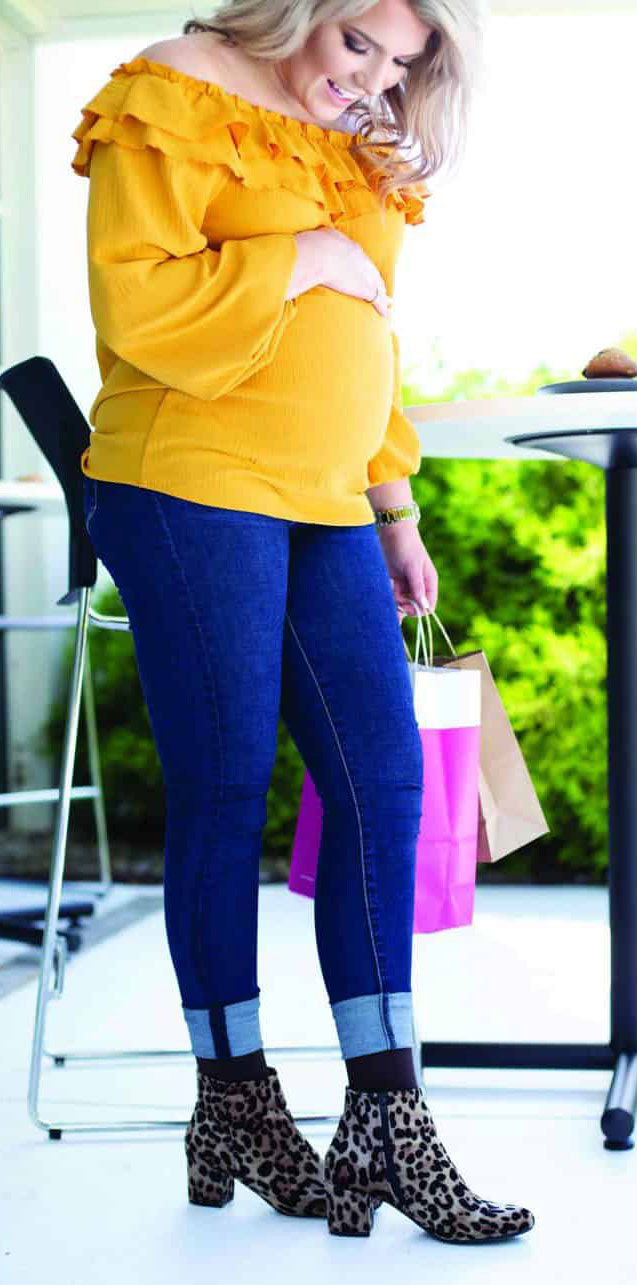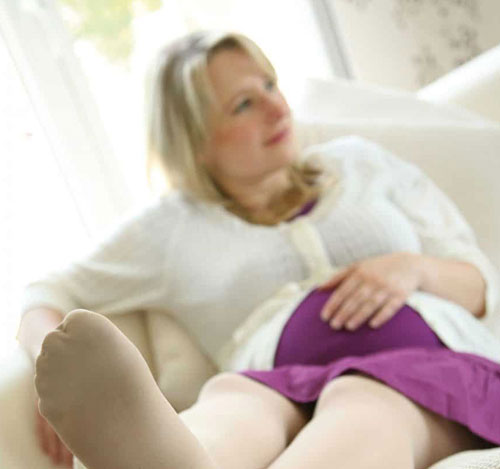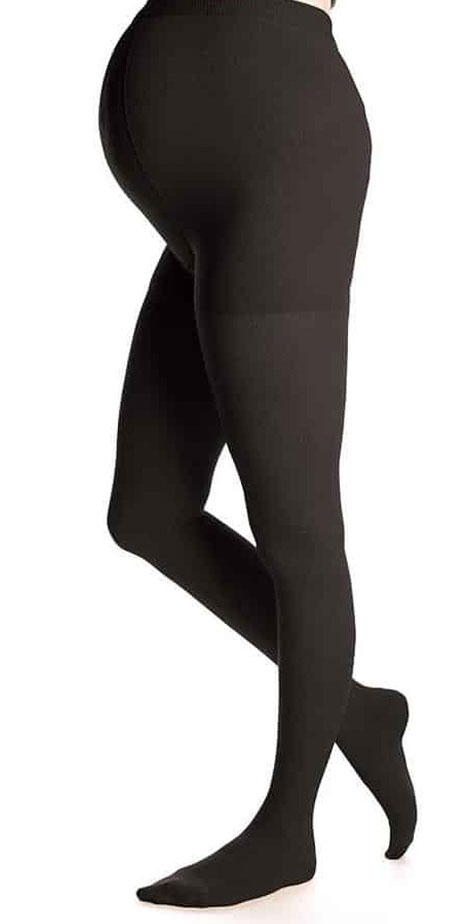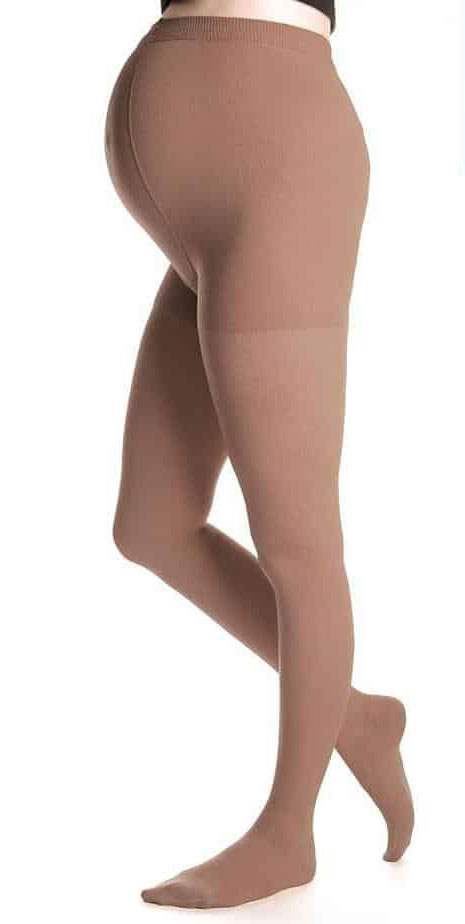MATERNITY COMPRESSION STOCKINGS

What compression stockings are best for pregnancy?
Using maternity compression stockings can help reduce damage to the venous system. Meanwhile, it alleviates the symptoms during pregnancy of swollen legs and ankles. It also helps tired or heavy legs and potential discoloration. The use of compression therapy during pregnancy should be under doctor supervision. Your doctor can recommend appropriate compression levels and style/length of the proper garment. Obtaining multiple pairs of stockings is recommended to ensure consistent use during the day and allow for regular wash and drying after every use.
Compression stockings come in full-length pantyhose with added material for the late stages of pregnancy, thigh-length, and calf-length styles. Many patients will acquire multiple types for various needs during pregnancy. Some days, a full-length garment might not be appropriate, and a calf or thigh-length will be sufficient. Again, always consult a doctor on your specific condition and compression treatment plan. Xceed Medical has trained staff that can help you get that perfect fit to ensure accurate compression and therapeutic success.
Women are more at risk of damaging their venous system during pregnancy due to increased blood flow. The increase in progesterone “softens” muscle tissue to allow the uterus to expand. But also the muscles that support the vein walls, and the reduction in physical activity promotes overall circulation.
Xceed Medical has a full range of styles and colors that are ideal for use during pregnancy. The skin-friendly materials will help keep patients cool and dry all day.
Why do legs feel tired and heavy during pregnancy?
Many women suffer from heavy, tired or swollen legs during pregnancy. Altered hormonal balance, increased weight and additional blood in the body means veins have to work harder during pregnancy. What would the percentage of blood be produced? Close to 20 percent extra blood develops at the beginning of pregnancy.
Symptoms and development of venous stress
Weight gain during pregnancy increases the pressure on the leg veins, and the blood flows slowly back to the heart through the leg veins. The vein dilation also leads to the venous valves no longer closing properly, which can cause the blood to flow back. In addition, fluid can leak through the blood backlog into the surrounding tissue, causing the legs and ankles to swell. As a result, varicose veins form.
Around half of all women develop varicose veins during their first pregnancy. In the second pregnancy, it appears women can be more affected. One-in-three women experience the formation of “pregnancy varicose veins” during their first pregnancy. These do not always disappear on their own after delivery. Although they tend to regress after childbirth as the weight and pressure on the veins stabilize, veins and venous valves are sometimes permanently impaired after pregnancy. This can lead to chronic venous disease, especially in women with additional risk factors, such as genetic predisposition or obesity.
Pregnant women have a three-to-five times higher risk of thrombosis than non-pregnant women. Up to six weeks after the baby is born, this risk increases even more – especially after a cesarean section or with significant blood losses. With thrombosis, a blood clot clogs the veins, and this causes the blood to build up, and serious consequences can result.

Why use maternity compression stockings during pregnancy?
Maternity Compression Stockings are a perfect solution for keeping your legs healthy. Medical compression stockings offer reliable support in effectively preventing thrombosis in pregnancy. Together with frequent exercise, they support the muscle pump’s functioning and venous blood return. Today’s compression stockings look like regular hosiery. Keep your style intact while remaining in good health.
- Compression class 1: is sufficient for most pregnant women.
- Compression class 2: can also be used for those with existing vein problems or heavy water retention. You should wear stockings from the third month of pregnancy until two months post-partem or until the end of breastfeeding.
Help syndrome or preeclampsia
Swollen legs during pregnancy could also be signs of Help syndrome or preeclampsia, which is associated with high blood pressure. In any case, please consult your doctor if you cannot control the swelling.
Lipedema and pregnancy
Hormones – an essential role in lipedema
Lipedema is a condition that causes excess fat to accumulate in the lower part of the body. It appears as an increase of painful fatty tissue on the legs and sometimes on the arms accompanied by edema (excess fluid). Experts think women are exclusively affected, and that it appears the cause is hormonal. It usually begins in puberty but can sometimes also occur after a pregnancy.
Stretch marks
In many pregnant women, the rapid weight gain leaves physical traces on the body. When the connective tissue is weak, stretch marks are created. In addition to the belly and waist, they can also appear on the legs. Applying lotions with special oils can prevent this, as can wearing compression stockings.
Tips for your pregnancy
Try not to cross your legs while sitting because the blood circulates better if you keep your legs side-by-side.
- Comfortable shoes and loose clothing will help keep you relaxed.
- If you’re in warm weather, try to keep yourself cooled off as much as possible.
- Integrate gentle exercise into your everyday life – swimming, walking and yoga are ideal for pregnant women.
- Strengthen your veins with vein exercises.
- Try to maintain an upright posture when carrying out your everyday activities in order to avoid incorrect posture and extra strain on your back.
- Put up aching, swollen legs as often as possible.
- Wear compression stockings.
- Drink 8 cups of water a day and make sure that you eat a balanced diet (fruit, vegetables, fiber – anything that is rich in vitamins).



